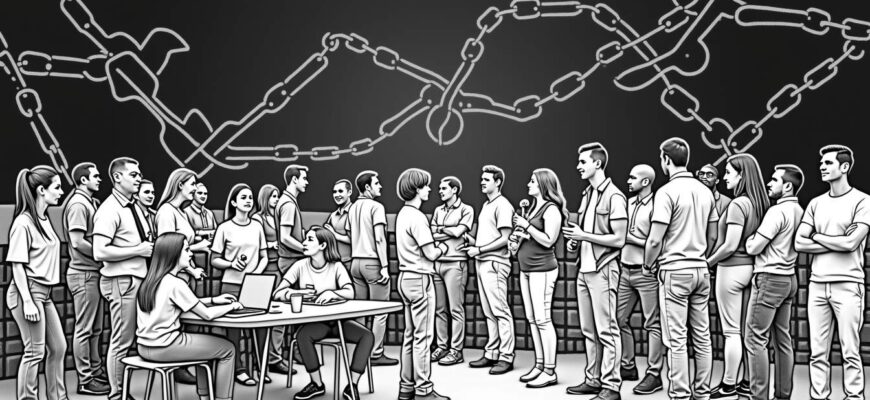Blockchain is stepping into the world of volunteer management, and honestly, it could change the game. Imagine if every donation you made was tracked live, ensuring that your money made its way directly to the people and causes you care about – with no middlemen involved. This post dives into how blockchain can make volunteer organizations run smoother and cheaper, all while giving a boost to both volunteers and beneficiaries.
- The Blockchain Advantage for Volunteers
- Real-Time Transparency
- Unchangeable Records
- Automation and Efficiency
- No More Middlemen
- Detailed Breakdown of Contributions
- Compliance and Anti-Corruption
- Empowering Beneficiaries
- Challenges to Consider
- User Interface and Experience
- Lack of Regulation
- Understanding and Skill Gaps
- Cost of Implementation
- Scalability and Integration Issues
- Regulatory and Legal Concerns
- Successful Implementations
- LutinX Blockchain for Charities
- Blockchain Solutions for Humanitarian Aid
- Decentralized Charity Funding
- Summary: The Future of Volunteer Management with Blockchain
The Blockchain Advantage for Volunteers
Blockchain is known for being decentralized and unchangeable, and it’s now making waves in volunteer management. When you have a transparent and tamper-proof ledger, every financial transaction and activity in a volunteer organization can be monitored in real-time. This kind of transparency helps build trust among donors, stakeholders, and volunteers. It makes sure money is used effectively.
Real-Time Transparency
The biggest perk? Every single transaction can be tracked as it happens. So, whether it’s donations, spending, or allocating resources, you see it in real-time. Donors know exactly where their money is going, and stakeholders can confirm that funds are going to where they are supposed to. This trust can actually encourage more donations and volunteers.
Unchangeable Records
Once something’s recorded on the blockchain, it’s there for good. This is crucial for keeping accurate records of financial activities, especially in organizations that depend heavily on public trust. You can’t just change things to suit your needs.
Automation and Efficiency
Blockchain can also automate some boring admin tasks through smart contracts. You know, the kind of stuff like donation verification and reporting. It takes away the need for people to do this, saving time and money. It also makes things run much more smoothly.
No More Middlemen
Usually, volunteer organizations rely on middlemen to handle transactions. But blockchain allows for direct transactions, cutting out the need for these middlemen. This saves money and makes sure more funds go to the intended cause.
Detailed Breakdown of Contributions
With blockchain, organizations can give detailed breakdowns of how donations are allocated to different projects. Donors can see exactly how their money is used. This can help build trust and confidence in the organization.
Compliance and Anti-Corruption
When you’re a global organization, following regulations about things like money laundering is crucial. Blockchain helps track where the money comes from, making sure you’re not dealing with dirty money. This helps reduce corruption and enhances credibility.
Empowering Beneficiaries
Blockchain can give real-time updates on where the money is going and how it’s being used. Beneficiaries can see how resources are utilized, which can help build trust and satisfaction in the community. It’s a win-win.
Challenges to Consider
User Interface and Experience
But let’s not get too ahead of ourselves. A big challenge is that many decentralized applications are, well, not user-friendly. If people can’t figure out how to use it, it won’t catch on.
Lack of Regulation
There’s also the issue of regulation. Without clear guidelines on decentralized technologies, organizations might hesitate to fully dive in because of legal uncertainty.
Understanding and Skill Gaps
Many individuals in the non-profit sector aren’t all that familiar with blockchain, and they will need training. Bridging this knowledge gap is essential.
Cost of Implementation
Getting blockchain up and running isn’t cheap. For many non-profits with tight budgets, the initial costs can be a huge hurdle. But the long-term benefits could outweigh the costs.
Scalability and Integration Issues
Merging blockchain into existing systems can be tricky. Organizations need to make sure their solutions can scale and integrate seamlessly.
Regulatory and Legal Concerns
Navigating the legal side, especially around data privacy, can be a nightmare. Organizations will need to find a way to balance transparency with protecting sensitive info.
Successful Implementations
Some organizations have made blockchain work for them.
LutinX Blockchain for Charities
The LutinX platform shows how blockchain can transform charity operations, including volunteer management. It’s been able to provide increased transparency and trust, reduce administrative costs, and enhance volunteer engagement.
Blockchain Solutions for Humanitarian Aid
Blockchain has already been used successfully in humanitarian aid delivery, improving efficiency and transparency.
Decentralized Charity Funding
Decentralized charity funding platforms using blockchain have shown promise in reducing transaction costs and increasing transparency.
Summary: The Future of Volunteer Management with Blockchain
Blockchain has the potential to revolutionize volunteer management by providing transparency, efficiency, and trust. Overcoming challenges related to user interface, regulation, and scalability will be crucial for the successful implementation of blockchain in the non-profit sector. As organizations continue to explore and adopt decentralized platforms, the future of volunteer management looks promising, with blockchain at the forefront of this transformation.








